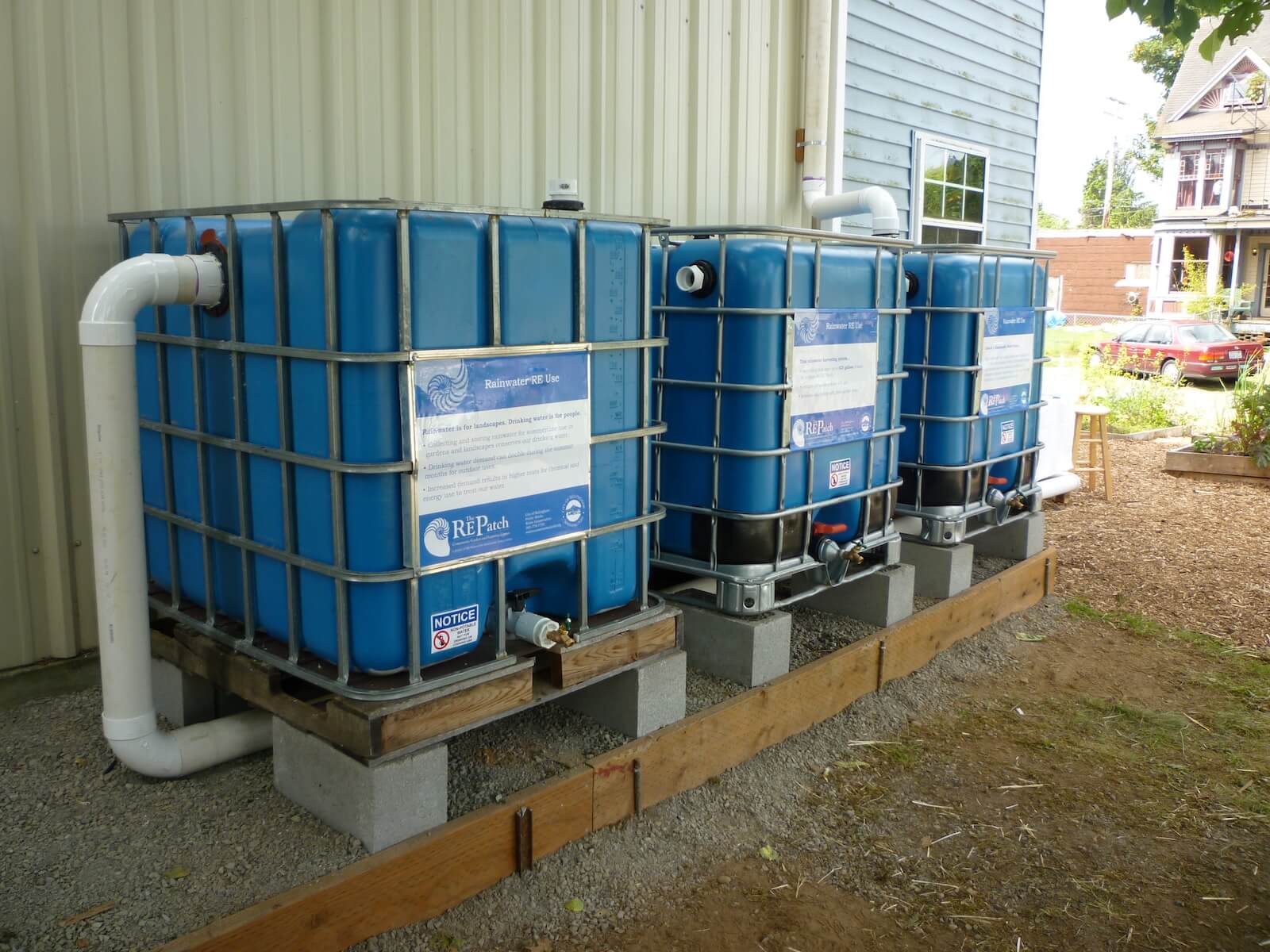
Your dog needs a bath, the car needs washing, and the garden is a little dry. The kids want to run in the sprinkler, but you don’t feel good leaving the hose running. Meanwhile, on rainy days, your opportunity for water conservation is running down your downspouts faster than you can say “water conservation.” So how do you have water for it all without a crazy bill? Set up a rain barrel and grow your own water.
A 55-gallon rain barrel will hold all the water that falls on a small roof in a half-inch rainstorm. You can run a hose from the barrel to water plants or a garden for a week or two. The barrel will refill with each downpour.
Materials list:
- Food-grade 55-gallon plastic barrel
- 3/4″ brass water faucet
- 3/4″ hose adapter and matching, threaded donut
- Teflon™ plumbers’ tape OR all-purpose adhesive caulk
- 4- to 6-inch screen (louver vent screens or atrium vents keep gutter debris and mosquitoes out)
- Concrete blocks or similar HEAVY DUTY platform material on which to place the barrel solidly. It is important to get the barrel at least 1 foot off of the ground. The higher you can safely mount the barrel, the more water pressure you will have. Remember, the barrel can weigh close to 450 pounds when full – that would REALLY hurt if it fell on someone.
Tools:
- Permanent marker
- Drill
- 29/32″ drill bit*
- Caulk gun if using caulk instead of Teflon™ plumbers’ tape.
- Saw – either a jig, saber, key hole or drywall saw to cut a 4-6″ diameter hole
- 3/4″ NPT Pipe Tap to create the threads for the faucet and hose adapter
Step-by-step instructions to set up a rain barrel
- Build a sturdy, level platform to secure your barrel on top of. Ensure the platform is at least 1 foot above ground to create water pressure. Rain barrels can weigh over 450 pounds when full, so make sure it is secured against tipping or falling.
- Ensure barrel is clean by washing it with biodegradable dish soap and water.
- Consider which direction you want the faucet and overflow valves to face. Direct them away from your building for easy access. Mark the holes on the side of the barrel – the overflow hole should be 2 inches from the top of the barrel, and the faucet hole should be approximately 2 inches up from the bottom of the barrel. (The lower you can place the faucet, the more water you can use). Then use a 29/32 inch drill bit to drill the two holes.
- Use a 3/4 NPT pipe tap and twist the tap into and back out of each 29/32 inch hole to create the threads for your faucet (bottom hole) and hose adapter (top hole overflow valve).
- Trace the hole for your screen on the top of the barrel. Use drill to make a starting hole, and then use a saw to cut.
- Prepare the threads of the faucet by wrapping with plumbers’ tape or caulk and screwing it into the bottom hole. Do the same for the overflow valve. Secure the screen over the hole on top of the barrel.
- Mount the barrel securely on the platform below the gutter downspout. Channel the downspout to the screened hole. You might need to attach an elbow to the downspout in order to direct it to your barrel. Hook up a section of hose to the overflow valve, and route water so that it doesn’t erode soil or run toward your building. You can also run the overflow hose or pipe to another raised barrel with a faucet and overflow hose of its own.
Tips:
- Leave the faucet open during extended freezing weather to prevent damage. If the water freezes, your barrel might bulge or break.
- Multiple barrels will increase your capacity. One 55-gallon barrel will provide runoff storage from a rooftop area of approximately 200 square feet for 1 /2 inch of rainfall. Larger cisterns are available at farm supply stores.
- Do you have large trees that drop lots of plant material into your gutters? If so, you might want to install gutter screens or plan to increase your gutter maintenance. Plant material in the gutter will collect in your rain barrel, clogging the spigot and fouling the water.
- Where will you divert the overflow hose or pipe, so it moves water away from the building? Choose a location downhill from your structure. You might also want to extend the length of your overflow hose or pipe and tie into your foundation drains.
- How will you control mosquitoes? Several options exist from seals and gaskets on closed barrels to goldfish or mosquito donuts in open barrels.
Click here for a printer friendly version of these instructions.
